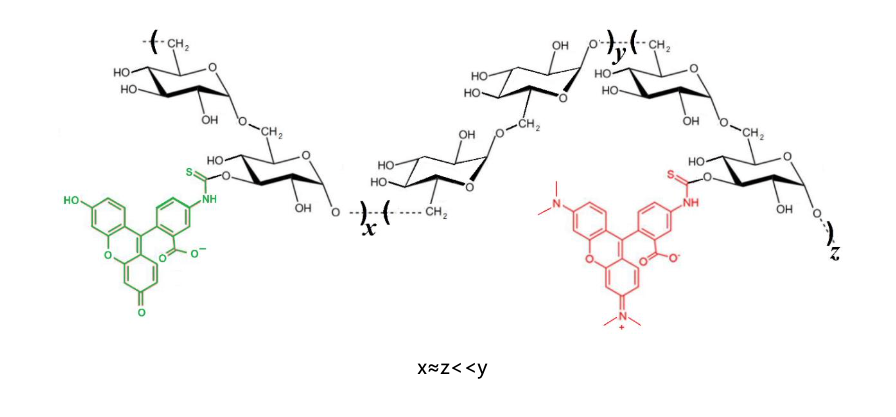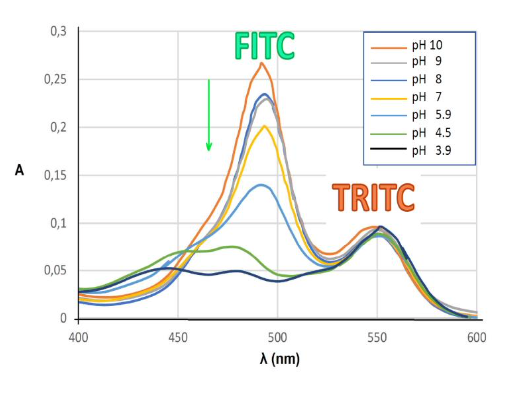FITC-TRITC-dextran 500

Fig 1. Structural representation of FITC-TRITC-dextran (FTD)

Fig 2. UV-Vis spectra depicting the dependence of two visible features of FTD upon varying pH

Fig 1. Structural representation of FITC-TRITC-dextran (FTD)

Fig 2. UV-Vis spectra depicting the dependence of two visible features of FTD upon varying pH
Search